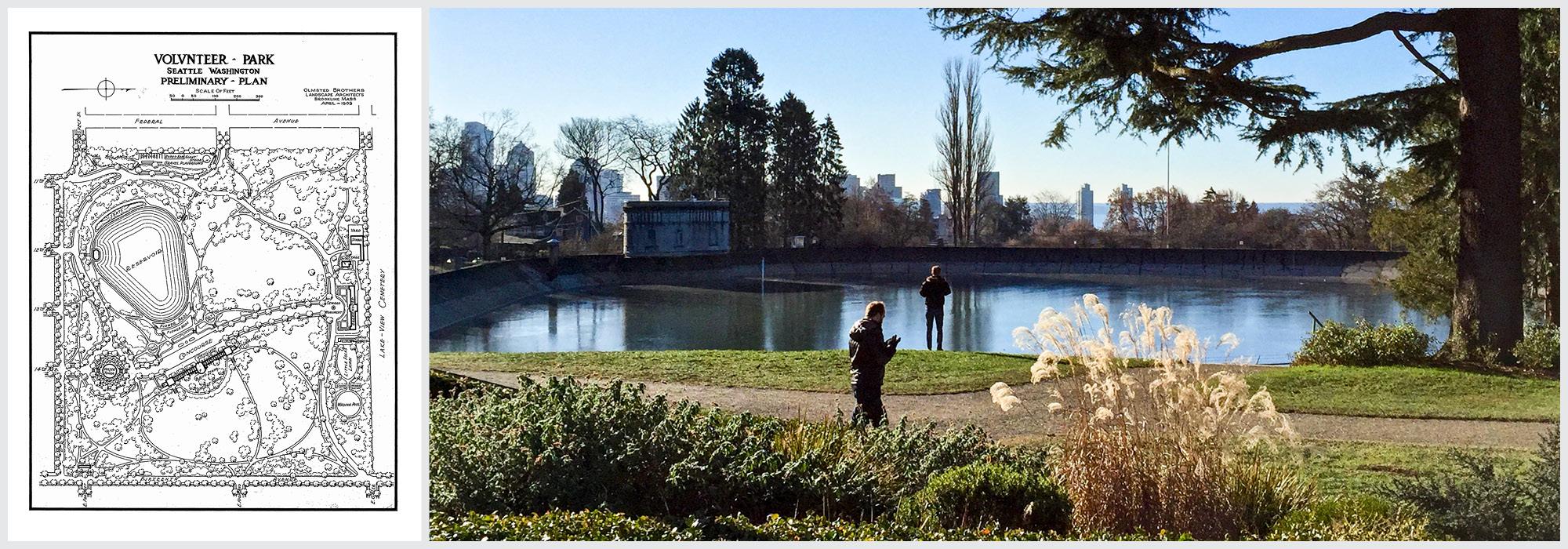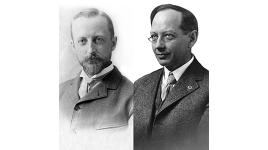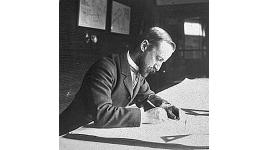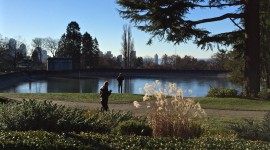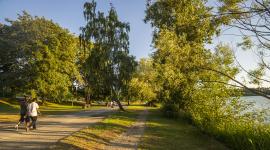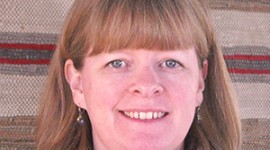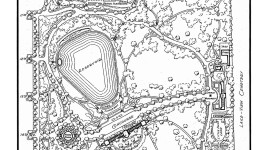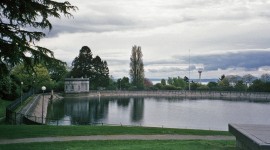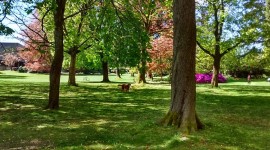Threatened: Seattle's Volunteer Park
“Volunteer Park belongs to the class of parks which may be distinguished from ornamental public squares, public gardens and public playgrounds by the designation ‘Landscape park.’ …In a park of that class, there should be no building or other feature no matter how meritorious in itself, that is not introduced as an aid to the public in enjoying the landscape. Any building in a landscape park should be subordinated very completely to the landscape design.”
-John Charles Olmsted in a letter to the President of the Board of Park Commissioners on October 11, 1910.
History
Volunteer Park, in the heart of Seattle, was originally purchased by the city in 1876. In 1901, the city’s first reservoir was built on the site. In 1903, Olmsted Brothers was engaged by the city to study Seattle’s open space potential. John Charles Olmsted’s report, A Comprehensive System of Parks and Parkways, was accepted that October, beginning a relationship between the city and the Olmsted firm that would span 33 years.
The original goal of the plan was to locate a park or playground within one half mile of every home in Seattle, with a 20-mile landscaped boulevard as both its dominant feature and connective tissue. Within ten years following the plan’s submission most of the land was secured. In all, the firm designed 37 parks and playgrounds throughout the region, including Volunteer Park.
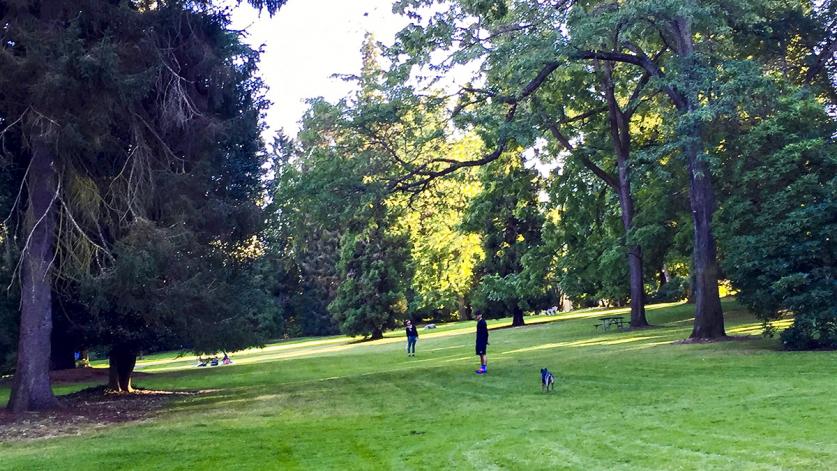
A 1909 plan for Volunteer Park was an integral element of Olmsted Brothers’ comprehensive plan. They envisioned Volunteer Park as Seattle's premier public landscape, and intended for it to provide visitors respite from the stress of urban life through restorative scenery and immersion in nature. The park’s original design took full advantage of “borrowed scenery”, incorporating the resevoir and sweeping lawns that provided westerly views of Puget Sound and the Olympic Mountains. In Seattle, the Olmsted’s were able to borrow scenery on a monumental scale (not the case back east). Additional park elements included macadam drives, lily ponds, a shelter, a pergola/music pavilion. In 1933 the Seattle Art Museum (SAM) was built in the heart of the park. In 1991, the museum relocated downtown, and in 1994 the Volunteer Park complex reopened as the Asian Art Museum. SAM oversees the downtown facility, the Asian Art Museum, and Olympic Sculpture Park.
Volunteer Park was listed in the National Register of Historic Places in 1976 (the first such designation for an Olmsted Brothers-designed park in Seattle) and designated a Seattle City Landmark in 2011.
Threat
A proposed construction project poses a threat to the integrity of Volunteer Park's significant Olmsted Brothers-designed landscape. The threat is the proposed 13,650-square-foot expansion of the Asian Art Museum. In 2008, citizens voted to support badly-needed seismic and mechanical upgrades to the original building. After an eight-year hiatus, planning efforts for improvements to the museum quietly resumed but included the largely unpublicized expansion.
In John Charles Olmsted’s own words, Volunteer Park was not intended to accommodate buildings except those "directly in service of public enjoyment of the landscape." Olmsted Brothers objected to the construction of a museum in the park because it destroyed the original 200-foot-long pergola, bandstand, and concert grove, and because a large-scale building severed the east side of the park from the west. And yet over the intervening 84 years, the museum's footprint has expanded a further 50%.
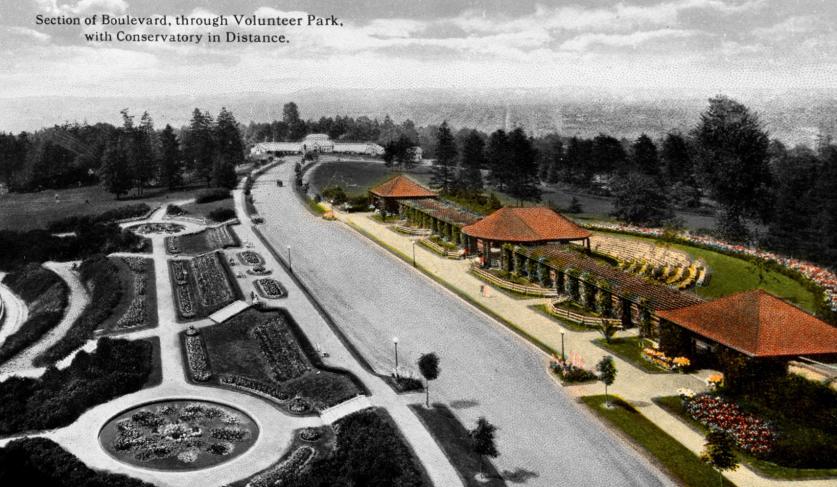
The proposed addition is 80 feet in length and nearly 50 feet in height. If built, it would intrude approximately 40 feet deeper into the remaining Olmsted Brothers-designed meadow. This addition includes a cantilevered glass room that wraps around the top level of the addition and would further project into the landscape as much as fifteen feet. Perhaps most impactful, the addition's placement insures that signature views dating to the Olmsted Brothers design will be permanently blocked, deep shadows will be cast, and specimen trees will be stressed or lost.
The proposed project was submitted to Seattle Department of Construction and Inspections (SDCI) in the fall of 2016 by SAM and is in the process of undergoing comprehensive review for a Master Use Permit. Landmark Preservation Board approval is a requirement prior to issuing a permit, but no hearings have been scheduled to date. A key SDCI decision is expected soon on whether an Environmental Impact Statement (EIS) will be required. Considerable public comment on various environmental elements (including historic resources) that need to be addressed under the proposed project have been voiced during public meetings. Several procedural hurdles also affect the permitting process: a zoning change to allow the museum to expand its non-conforming use in a residential zone, and a determination of whether or not the museum constitutes a "park use" per a 1997 city ordinance (Save Our Parks Initiative 42, Ordinance 118477) that states: “All park land shall be preserved for park, boulevard or open space use and cannot be sold, transferred or changed from park use to another use, unless:”
- the City holds a public hearing on the necessity of the transaction, and;
- adopts an ordinance finding the transaction is necessary because there is no reasonable and practical alternative, and;
- the City receives in exchange a piece of land or facility of equivalent or better size, value, location and usefulness in the vicinity.
“Non-park use” is defined by the Seattle Department of Parks and Recreation as: any use or treatment of park land by private parties or other public agencies that limits or diminishes the ability of the public to use or enjoy public park property (City Council Resolution #29475, 1996).
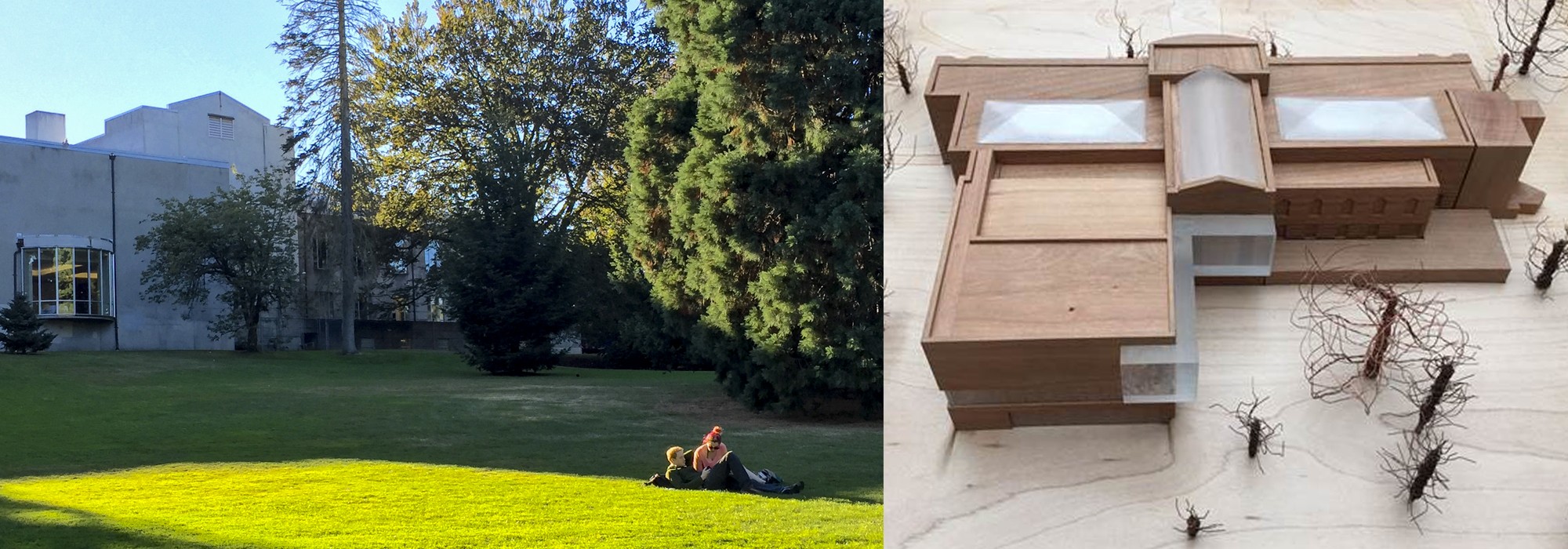
What Can Be Done?
The proposed expansion by SAM is part of a larger national trend that sees parkland/open space surrendered for new building projects. In a December 7, 2016 letter the co-chairs of the National Association for Olmsted Parks (NAOP) said the organization, “strongly recommends that the City of Seattle reconsider plans to expand the building that houses the private Asian Art Museum in Volunteer Park.” The letter continues: “Volunteer Park is significant both individually and as the centerpiece of one of the best-designed and most fully implemented comprehensive park systems the Olmsted landscape architecture firm created over its century of practice.”
Concerns about adverse impacts to the park have also been raised by Friends of Seattle’s Olmsted Parks (FSOP) and by the Seattle Parks and Recreation department. FSOP, a non-profit established in 1983 to “preserve Seattle’s Olmsted landscape heritage, and raise awareness of the Olmsted philosophy of providing space for all people,” opposes the museum expansion project because sufficient alternatives have not been fully explored.
In a January 6, 2017 letter, parks department superintendent Jesus Aguirre suggested the project be put on “pause” to allow the department “to respond to community members and the Board of Park Commissioners on an array of issues that have been raised during the public involvement process.” The letter to SAM Director and CEO Kim Rorschach says the parks department wants to “more carefully consider park impacts.” Among the questions raised is the degree to which SAM has considered “feasible alternative that do not expand into parkland.”
FSOP has stated that Volunteer Park is a significant component of Seattle’s Olmsted Brothers Parks and Boulevards system, one of the city’s most beloved public open spaces, and deserving of a high level of review and consideration. Park advocates, including FSOP, would like to see the permitting process put on hold until most, if not all, of the following actions occur:
- SAM has provided detailed justification for its design program or modified it so as not to adversely affect the historic park;
- SAM has seriously explored alternatives, including but not limited to: no-build, relocation of non-exhibit functions, reducing size by dropping non-essential elements that could go elsewhere, expansion in a less damaging direction, partly or fully undergrounding addition;
- SAM has priced options for their construction cost, life cycle cost and LEED/SSI rating;
- SAM and City as property owner (of both building and land) have completed a cost/benefit analysis based on explicit criteria;
- Park users and general public have been given authentic opportunities for input on their wishes and needs for the project, and some assurance that their programmatic needs will be considered on par with the museum's;
- The public gets to review alternatives and provide feedback before a new design is finalized.
To support the call for careful planning of historically significant Volunteer Park, please contact the local officials listed below and express your appreciation for the park, and/or your concern about the proposed plan (Project #3024753).
The Seattle City Council Parks, Seattle Center, Libraries & Waterfront Committee
Chair: Debora Juarez at Debora.Juarez@seattle.gov
Vice Chair: Sally Bagshaw at Sally.Bagshaw@seattle.gov
Committee Member and City Council President: Bruce Harrel at Bruce.Harrell@seattle.gov
Committee Alternate: Kshama Sawant at Kshama.Sawant@seattle.gov
Please c.c.:
The Superintendent of the Seattle Parks Department: Jesus Aguirre, at Jesus.Aguirre@seattle.gov
The Director of the Seattle Department of Construction and Inspections: Nathan Torgelson, at Nathan.Torgelson@seattle.gov
Finally, visit protectvolunteerpark.org to sign two petitions in support of further study and project evaluation before permits are issued by the city. Per their website, Protect Volunteer Park approves of necessary upgrades and renovation at the museum (such as seismic safety and air conditioning), but not at the expense of public parkland.



